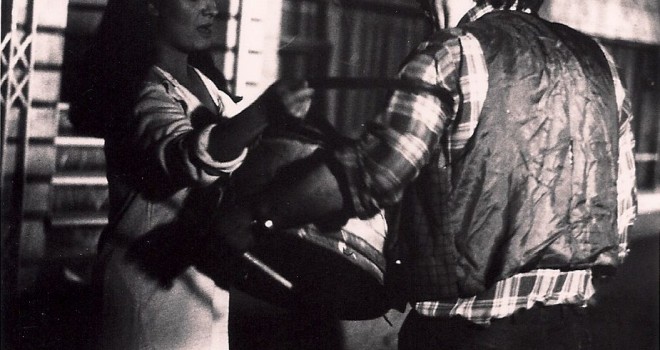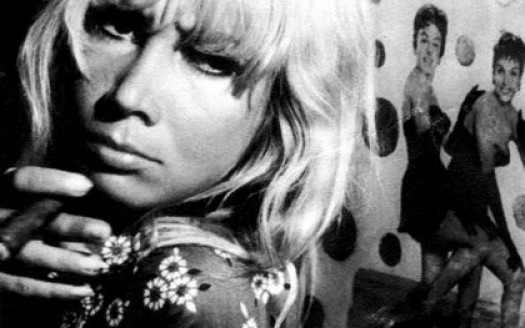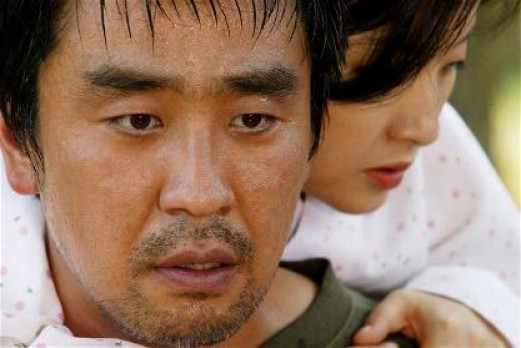Bobeta’s master, played by Maximiliano Paz, is lame, extremely pale, uses a cane and wears dark glasses, as well as boots, a black shirt and tie, a white smock and rubber gloves. He has one shoulder higher than the other, something of a faint hump, and is afflicted by tics and uncontrolled movements. Although he doesn’t fit any of them, his composition evokes the following types: the doctor, the mad scientist, the schoolmaster, the retired soldier with his war wounds, the image of the father, the overseer of an insane asylum, the sadistic vet of some garden, rather than zoological, teratological.
And then there is the woman who possesses the young man. This role is played by Nora Quet. She wears a hood and a cape, and an ankle-length skirt. She always carries a reticule and a closed parasol. Her skin is shiny and as if polished. Inexpressive, her activity is mechanical and routine. As with any oppressor, it is up to her to look after the oppressed.
Bobeta’s young companion (played by Osvaldo Quiroga) is also a fine example of a ‘submissive’. But in this case, there is no evolution, given his condition as the object (and not the subject, as is the case with Bobeta) of his own story. A total animal, he will touch his vital possibilities through pleasure, and lose them through pain.





